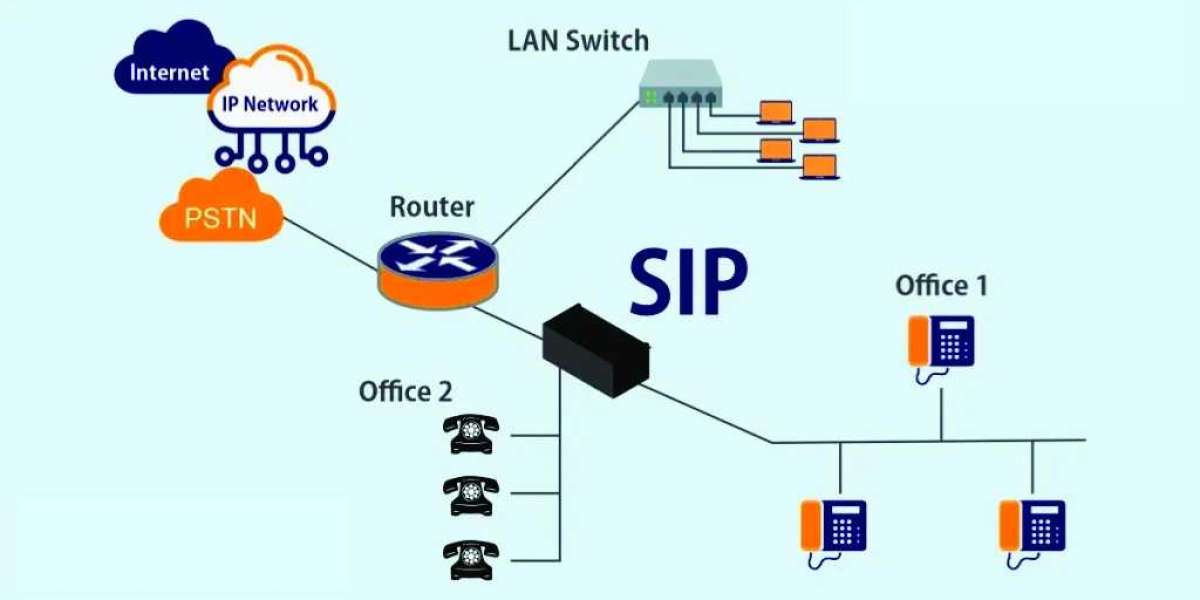Introduction
In the vast landscape of modern communication, the Session Initiation Protocol (SIP) stands as a cornerstone, facilitating seamless interaction across digital platforms. From voice calls to video conferences, SIP plays a pivotal role in establishing, modifying, and terminating communication sessions.
What is SIP?
At its core, SIP is a signaling protocol used for initiating, maintaining, and terminating real-time communication sessions over IP networks. Developed by the Internet Engineering Task Force (IETF), SIP operates at the application layer of the OSI model, making it independent of the underlying transport layer protocol. This flexibility allows SIP to adapt to various networking environments, including TCP, UDP, and even SCTP.
Key Components of SIP
SIP User Agents: SIP employs user agents to initiate and terminate communication sessions. These agents come in two forms: User Agent Client (UAC) and User Agent Server (UAS). The UAC sends SIP requests, such as INVITE, to establish sessions, while the UAS responds to these requests, facilitating session establishment.
SIP Proxy Servers: Proxy servers act as intermediaries between user agents, forwarding SIP requests and responses as necessary. They play a crucial role in routing and maintaining the flow of SIP messages across networks.
SIP Registrar: Registrars are responsible for authenticating and registering users within a SIP domain. When a user agent wishes to initiate communication, it first registers with the SIP registrar, providing its current location and contact information.
SIP Redirect Server: Redirect servers assist in call routing by providing users with alternative destinations for communication sessions. If a user's location changes or if the requested resource is unavailable, the redirect server informs the user agent of an alternate route.
SIP Message Structure
SIP messages follow a structured format, consisting of a start line, headers, and an optional message body. The start line indicates the type of message, such as INVITE for initiating a session or 200 OK for confirming a successful request. Headers provide additional information, including the sender's identity, destination address, and supported communication capabilities.
SIP Trunk Service: Revolutionizing Communication
In the realm of enterprise communication, sip trunk service has emerged as a game-changer, offering cost-effective and scalable solutions for voice and multimedia services. Unlike traditional analog or PRI lines, SIP trunking leverages IP networks to connect an organization's private branch exchange (PBX) to the public switched telephone network (PSTN) or internet telephony service provider (ITSP).
By adopting SIP trunking, businesses can consolidate their communication infrastructure, eliminating the need for physical phone lines and reducing operational costs. Moreover, SIP trunking provides unparalleled flexibility, allowing organizations to scale their voice services according to demand without cumbersome hardware upgrades.
Benefits of SIP Trunk Service
Cost Efficiency: SIP trunking eliminates the need for separate voice and data connections, reducing monthly telecommunication expenses. With pay-as-you-go pricing models, businesses only pay for the channels they use, optimizing cost-effectiveness.
Scalability: Traditional telephony systems often struggle to accommodate fluctuations in call volume. SIP trunking offers dynamic scalability, enabling organizations to add or remove channels on-demand, ensuring uninterrupted communication during peak hours.
Geographic Flexibility: With SIP trunking, businesses can establish virtual phone numbers from different geographic regions, enhancing their global presence without physical infrastructure investments. This geographical flexibility facilitates localized customer interactions and improves accessibility.
Disaster Recovery: SIP trunking provides built-in redundancy and failover capabilities, ensuring business continuity in the event of network disruptions or natural disasters. By rerouting calls to alternative destinations, organizations can maintain communication resilience during unforeseen circumstances.
Challenges and Considerations
While SIP trunking offers numerous benefits, its implementation requires careful planning and consideration of various factors:
Network Security: As SIP trunking relies on IP networks, organizations must implement robust security measures to protect against malicious attacks, including denial-of-service (DoS) and eavesdropping.
Quality of Service (QoS): Maintaining high-quality voice and multimedia transmission over SIP trunking requires adequate network bandwidth and QoS prioritization to minimize latency and packet loss.
Interoperability: Compatibility between SIP trunking providers and existing telephony equipment, such as PBX systems, may pose challenges during integration. Ensuring seamless interoperability is crucial for a smooth transition to SIP-based communication.
Conclusion
In an era defined by interconnectedness and digital innovation, SIP emerges as a fundamental protocol driving modern communication ecosystems. Its ability to seamlessly establish and manage real-time sessions across IP networks has revolutionized the way individuals and organizations interact. With the advent of SIP trunking, businesses have unlocked new avenues for cost-effective, scalable, and resilient communication solutions. By embracing SIP and its associated technologies, stakeholders can navigate the evolving landscape of digital communication with confidence and agility.







